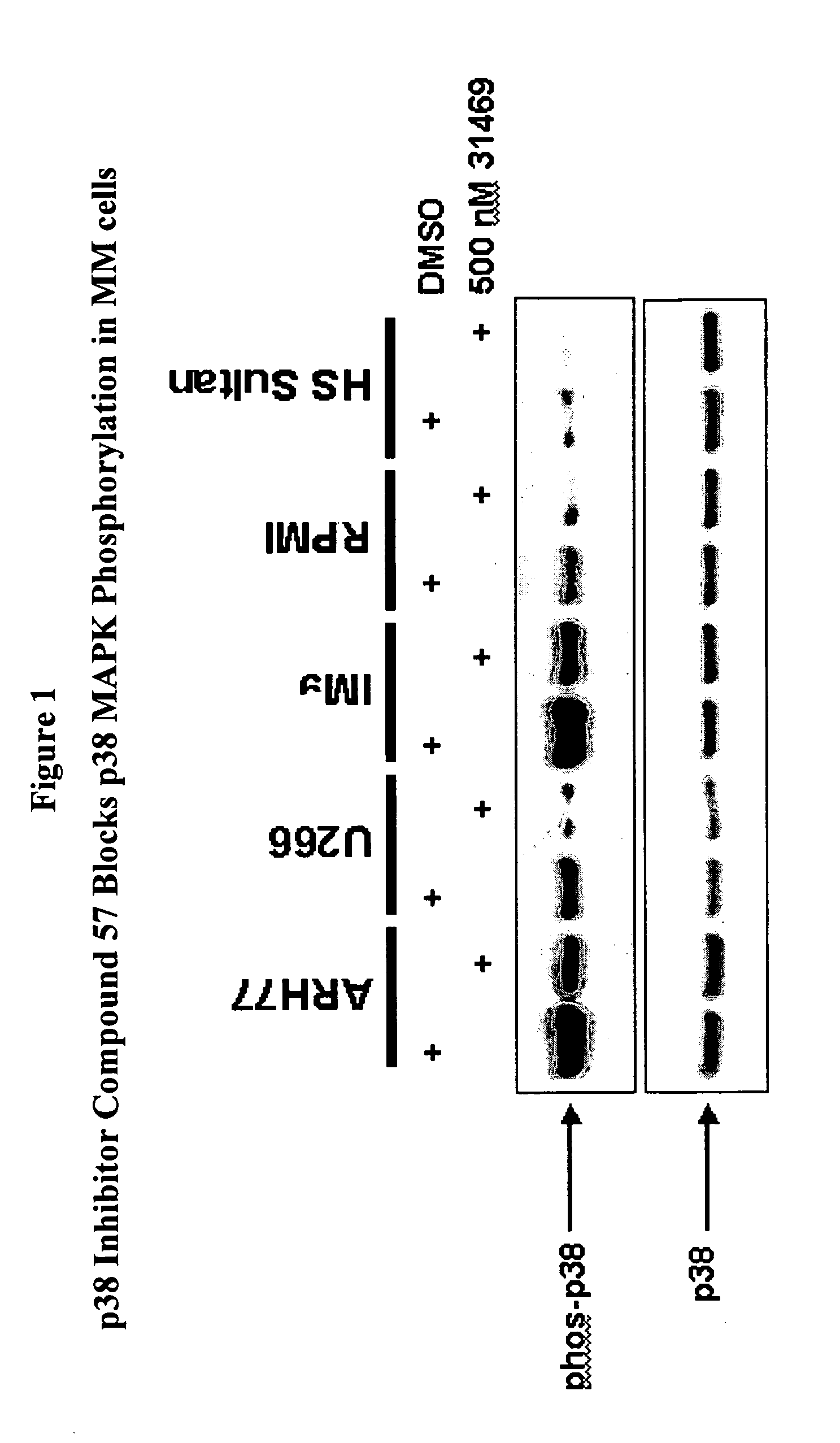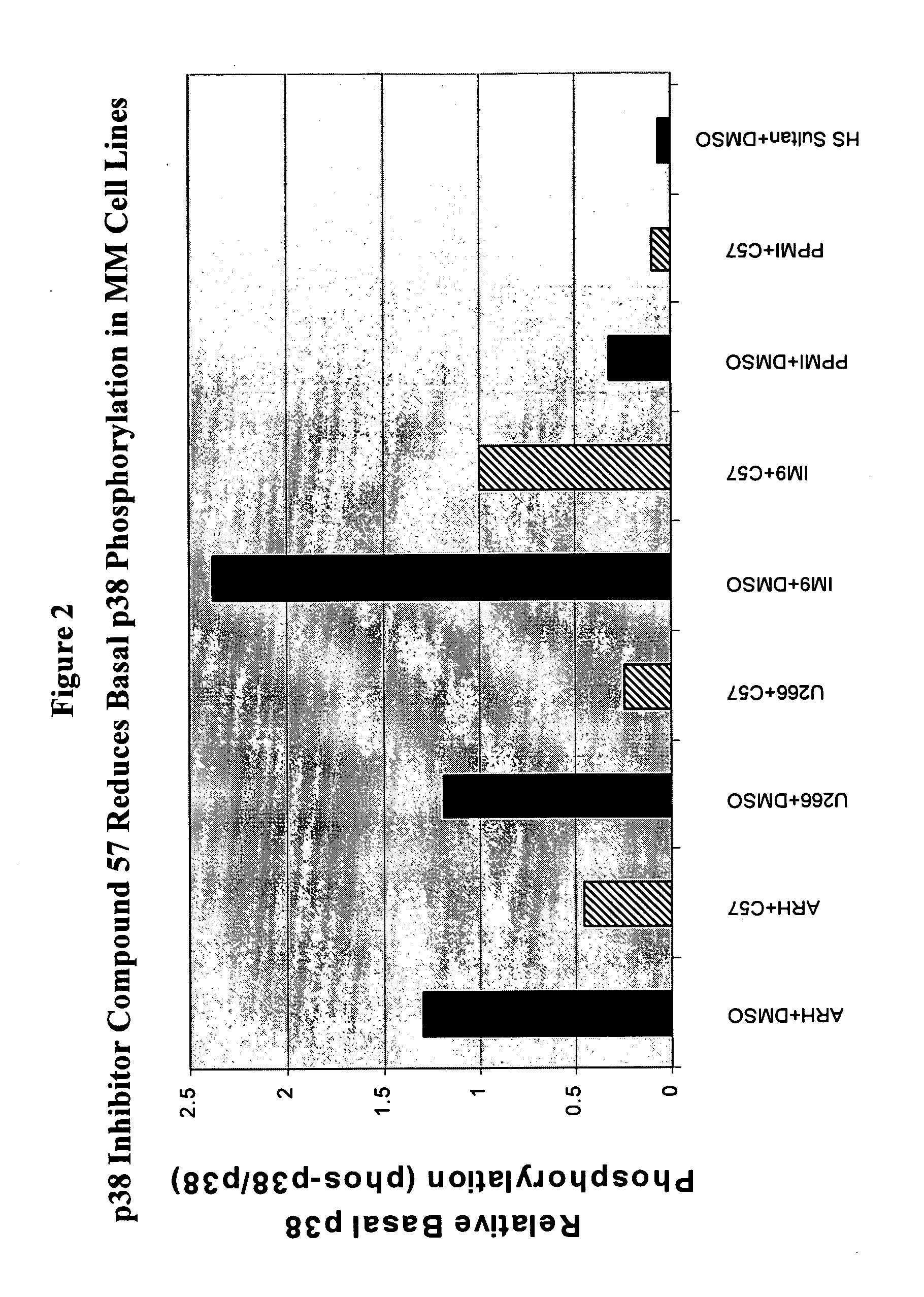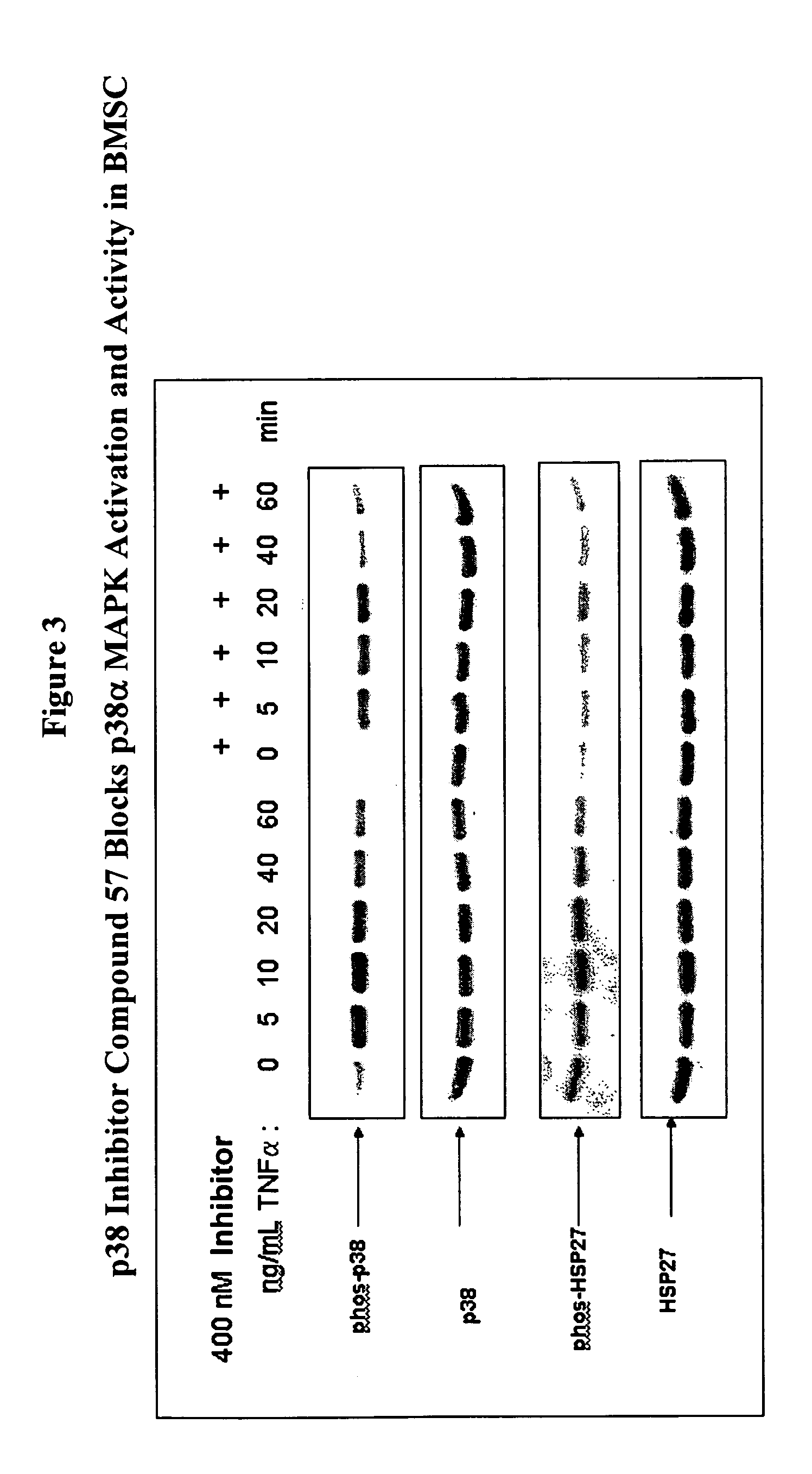Treatment of multiple myeloma by p38 MAP kinase and proteasome inhibition
a technology of proteasome and multiple myeloma, which is applied in the field of multiple myeloma treatment by p38 map kinase and proteasome inhibition, can solve the problems of high side effect incidence and many do not respond
- Summary
- Abstract
- Description
- Claims
- Application Information
AI Technical Summary
Benefits of technology
Problems solved by technology
Method used
Image
Examples
example 1
p38 Activation in Multiple Myeloma
[0126] p38 MAPK is activated via dual phosphorylation by MEKK3 and / or MEKK6. The activated form of p38α MAPK is found in untreated and TNFα-activated MM cells, and in BMSC, using p38α phospho-specific immunodetection. BMSC are obtained from seven different donors (three normal healthy individuals and four MM patients). In the experiments reported here, no differences between BMSCs obtained from patients and healthy individuals were noted. A variety of widely used MM cell lines were also used in the studies described below.
[0127] The phosphorylation of p38α MAPK in MM cells was substantially suppressed by the MAPK inhibitor Compound 57 shown in Table 2 (see FIG. 1 and FIG. 2), while the phosphorylation of p38α MAPK in BMSC was partially suppressed (FIG. 3). This inhibitor blocked activity of p38 MAPK, but not the direct activation of the p38 MAPK enzyme or the activity of kinases upstream of p38 MAPK (e.g., MKK3 and MKK6); therefore this cellular e...
example 2
Receptor Activator of Nuclear Factor-κB Ligand (RANKL)
[0129] RANKL is a powerful inducer of osteoclast differentiation and activation. This transcription factor is highly activated in MM cells and is activated by p38α MAPK. For this reason, experimental therapeutic strategies for MM bone lesions and other osteolytic diseases are focusing on inhibition of RANK signaling, including activation of NFκK. This transcription factor is highly activated in MM cells, and is activated by p38 MAPK. NFκK inhibition is believed to be a major mechanism in several demonstrated therapies for MM.
[0130] RANKL mRNA is powerfully induced by TGFβ and IL-1 in BMSC and MM / BMSC cultures. Exposure to 100 nM p38 MAPK inhibitors Compound 57 or the hydrochloride salt thereof blocked this induction, as well as basal expression of RANKL mRNA (FIG. 5). In addition, 100 nM of these p38 MAPK inhibitors blocks the weaker induction of RANKL by IL-6 in BMSC.
example 3
p38 MAPK Inhibition in the Presence of Chemotherapeutic Agents and Potential Effects on MM Cells
[0131] p38 MAPK activity is necessary for production of factors such as IL-6, and therefore contributes to MM cell survival, even in the presence of chemotherapeutic agents. For example, a p38-mediated stress response in MM cells may invoke protective mechanisms, and in BMSC may induce secretion of MM survival factors such as IL-6. In fact, the unusual chemoresistance of MM cells compared to other B cell malignancies is thought to be due in part to IL-6-mediated support of MM cells.
[0132] Inhibition of p38 MAPK enhances the effects of conventional MM chemotherapeutic treatment and may function through one or both of two mechanisms: 1) by down-regulating the activity of one or more of these various factors; 2) through an overlap of mechanisms of action with some of the newer therapeutic agents. Proteasome inhibitors such as VELCADE block NFκK (a transcription factor central to inflammato...
PUM
| Property | Measurement | Unit |
|---|---|---|
| Volume | aaaaa | aaaaa |
| Electrical resistance | aaaaa | aaaaa |
| Cell growth | aaaaa | aaaaa |
Abstract
Description
Claims
Application Information
 Login to View More
Login to View More - R&D
- Intellectual Property
- Life Sciences
- Materials
- Tech Scout
- Unparalleled Data Quality
- Higher Quality Content
- 60% Fewer Hallucinations
Browse by: Latest US Patents, China's latest patents, Technical Efficacy Thesaurus, Application Domain, Technology Topic, Popular Technical Reports.
© 2025 PatSnap. All rights reserved.Legal|Privacy policy|Modern Slavery Act Transparency Statement|Sitemap|About US| Contact US: help@patsnap.com



